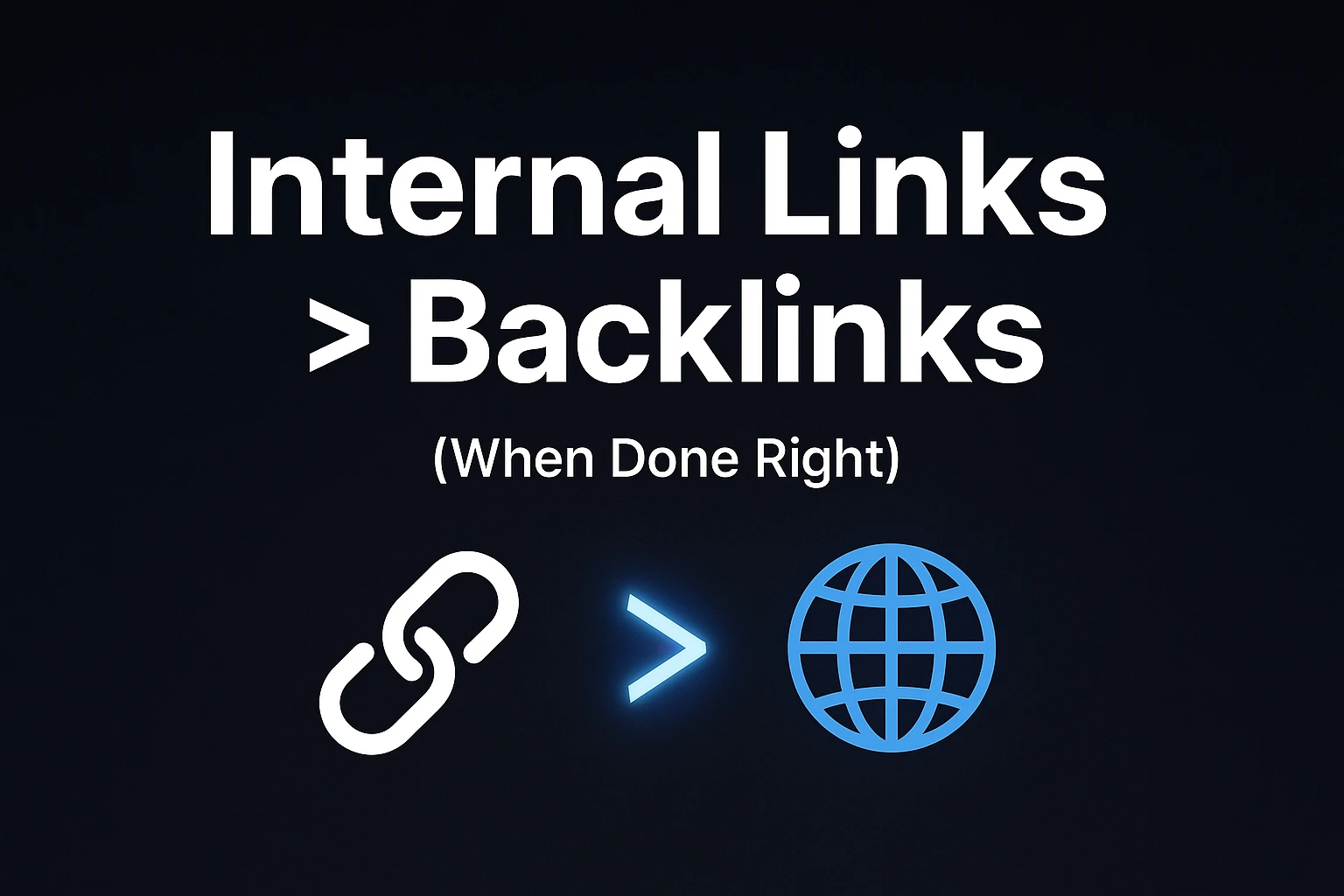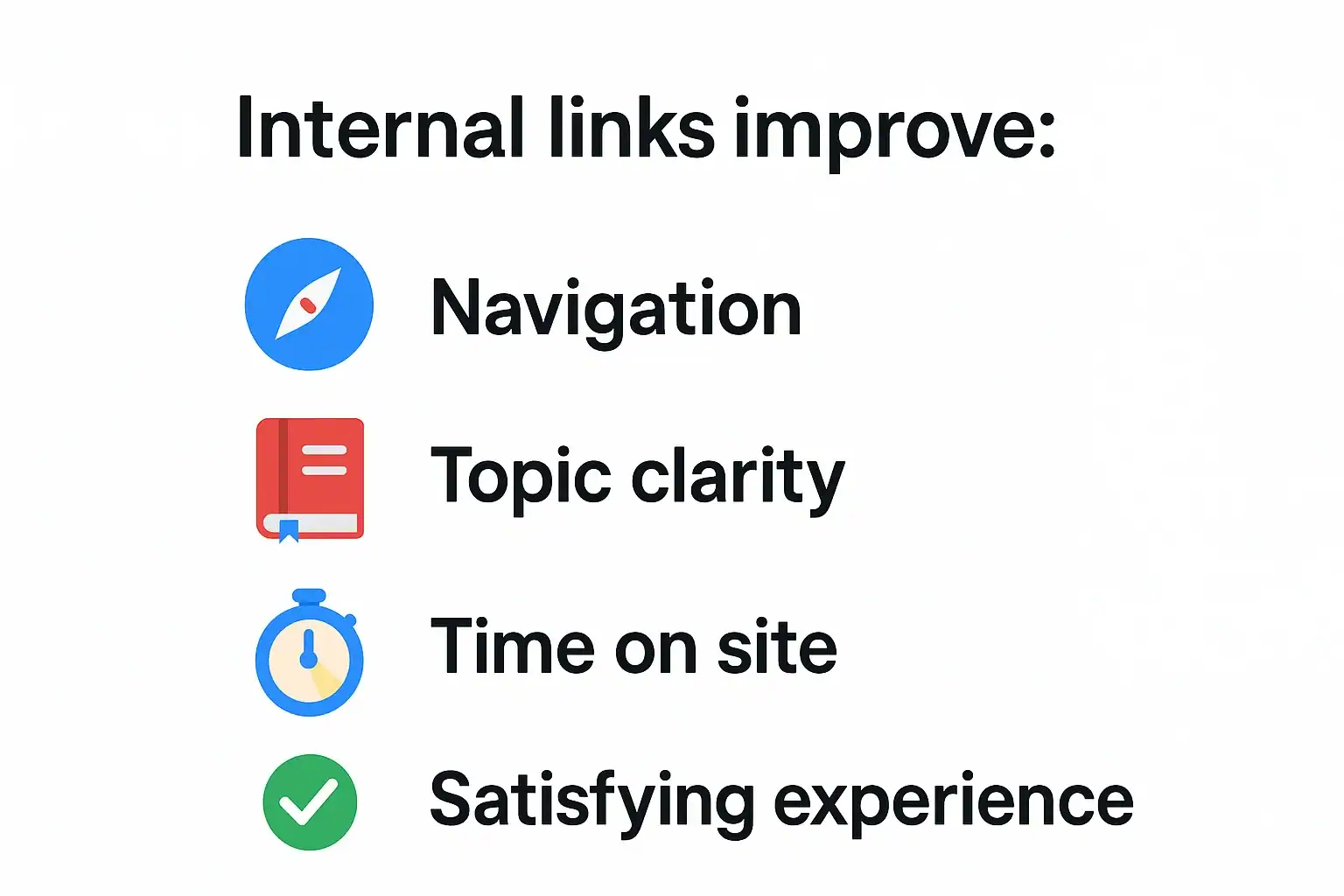
For over a decade, backlinks have reigned supreme in SEO. They’ve been treated as golden tickets to the top of Google—votes of trust from the web.
In 2025, there’s a better, more sustainable, and fully controllable strategy that most businesses are missing: internal linking.
Yes, backlinks still matter. But if you’re pouring time, budget, and energy into acquiring external links while ignoring your internal linking structure, you’re leaving rankings—and revenue—on the table.
Let’s unpack why.
Backlinks Are External Votes. Internal Links Are Controlled Power.

Backlinks are like public endorsements. You have to earn them. Or buy them. Or wait months for a PR campaign to pay off.
Internal links, on the other hand, are completely within your control.
They allow you to:
- Guide Google’s crawlers
- Consolidate topical authority
- Pass ranking power to your commercial pages
- Improve UX and dwell time
- Support content clusters that actually work
Think of backlinks as billboards. Internal links? They’re the wiring in your house—how power flows from room to room.
5 Internal Linking Tactics That Outperform Average Backlinks

You don’t need to hire a PR firm or fire up a thousand cold emails. You need a strategy.
Here are five high-impact internal linking tactics that can outperform the average backlink:
- Link high-authority pages to your commercial money pages That 2-year-old blog post bringing in traffic? Use it to boost your product or service page.
- Use keyword-rich anchor text Forget generic “click here” links. Use anchor text that aligns with searcher intent and actual queries.
- Build topic clusters Interlink related content to form tightly themed silos. This improves relevance signals for Google—and clarity for users.
- Refresh old content with new internal links Every new post should link back to existing content. Every old post should be updated with links to your new assets.
- Add contextual links mid-article Menu bars and footers don’t cut it. Insert links where users are most engaged: within the content itself.
Internal Linking = SEO Infrastructure

Most people treat internal linking as a checklist item. Add a few links, tick the box, move on.
But the right way to approach it’s like building infrastructure—your own private network for ranking power.
With every new page you publish, your internal link architecture can scale. You’re not starting from scratch. You’re stacking bricks.
This is SEO compounding in action.
It’s Not Just Strategy—It’s Google-Friendly

This isn’t about gaming the system. Internal linking aligns with Google’s Helpful Content Guidelines:
- It improves navigation
- It enhances topical clarity
- It increases time on site
- And it creates a more satisfying user experience
It’s people-first SEO. And it works.
The 2025 SEO Power Move
Here’s the hard truth: backlinks aren’t dead—but they’re overrated.
Chasing backlinks while ignoring your internal linking strategy is like chasing investors without fixing your product.
So if you want to grow your rankings, traffic, and revenue—without begging, buying, or praying for backlinks—this is your move:
Build your fortress from within.
Need Help Building a High-Performance Internal Linking Strategy?

At Digital Business, we’ve helped clients in outdoor leisure, healthcare, and beyond rank faster and convert better using smart internal SEO structures.
💬 DM us today and we’ll show you how to wire your site for growth—page by page, link by link.
🔍 Internal Linking & SEO: Your Questions Answered
Still wondering how internal links fit into the bigger SEO picture? Here’s a no-fluff breakdown of what you need to know—fast, clear, and straight to the point.
What are the benefits of using internal linking as an SEO strategy?
Internal links help you pass authority between pages, guide users through your site, boost engagement, and increase your chances of ranking key commercial pages. It’s a high-leverage move that scales.
How does internal linking enhance SEO?
It improves crawlability, strengthens topical relevance, and distributes PageRank to the pages that matter most—especially the ones that make you money.
What’s the significance of links in SEO?
Links—whether internal or external—are how search engines discover and prioritise content. They’re signals of relevance, trust, and structure.
Is internal linking considered part of off-page SEO?
Nope. Internal linking is a classic on-page SEO move. It happens entirely within your website—and that’s the beauty of it. You control it.
Do internal links influence search rankings?
Absolutely. When done right, they help Google understand your site’s hierarchy, relevance, and which pages deserve to rank.
What are effective linking strategies for SEO?
Link authority pages to target pages, use anchor text that matches search queries, build topic clusters, refresh old posts with new links, and add links contextually—not just in menus.
What types of links can enhance SEO rankings?
Quality backlinks build authority. Smart internal links guide and amplify that authority. Contextual links—especially those inside the content—carry the most weight.
What distinguishes an internal link from a backlink?
Internal links connect pages within your site. Backlinks come from other websites. One you control. The other you don’t.
Are links still important for SEO?
Yes. Links are foundational. But these days, smart internal linking often gets better results than chasing mediocre backlinks.
What is the ideal number of internal links for SEO?
There’s no magic number. Link naturally, link strategically. 3–5 high-quality internal links per page is a good starting point.
Can having excessive links negatively impact SEO?
Yes. Too many links—especially in footers or menus—can dilute value and confuse users. Prioritise relevance over volume.
What is the significance of internal links for SEO, according to HubSpot?
HubSpot confirms what many SEOs know: internal links boost page authority, improve user experience, and strengthen site structure.
Do external links negatively impact SEO?
Not at all—if they’re relevant and from reputable sources. In fact, external links to trusted sites can increase your own credibility.
What are the steps to conduct an internal linking audit?
- Crawl your site (use tools like Screaming Frog)
- Identify orphan pages (no internal links)
- Analyse anchor text use
- Map links from high-authority to underperforming pages
- Update content to improve flow and relevance
Can you provide an example of an internal link?
Sure. If this post linked to another guide on “SEO content strategy,” that would be an internal link—keeping users (and Google) within your site.
What role does link-building play in SEO?
It’s still important. But building internal links is often faster, cheaper, and easier to scale than chasing external ones.
What are the benefits of internal linking?
Better rankings. Smarter site structure. More time on page. Higher conversions. All without spending a penny on outreach.
Does external linking benefit SEO?
Yes—when you link out to authoritative, relevant sites, it shows you’re credible and helpful. Just don’t overdo it.

3 responses